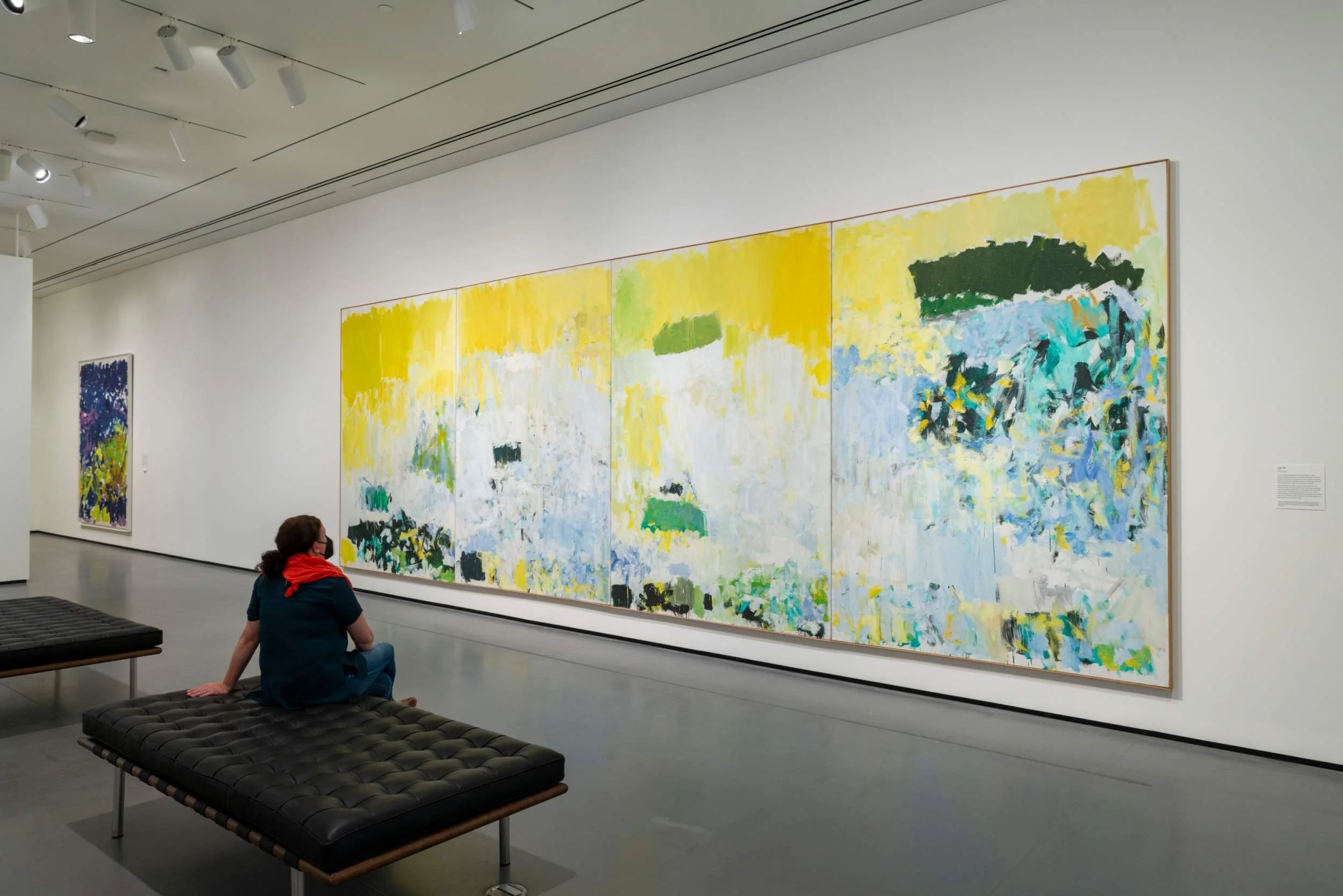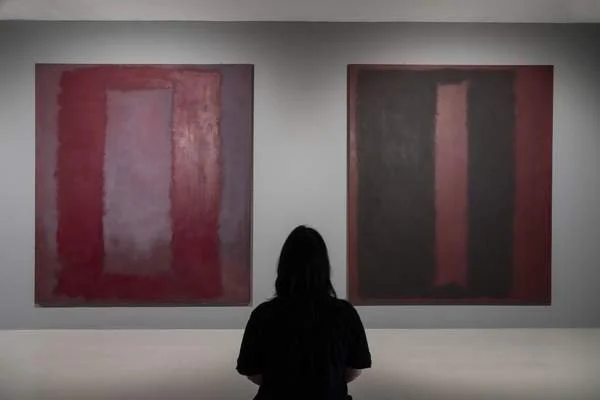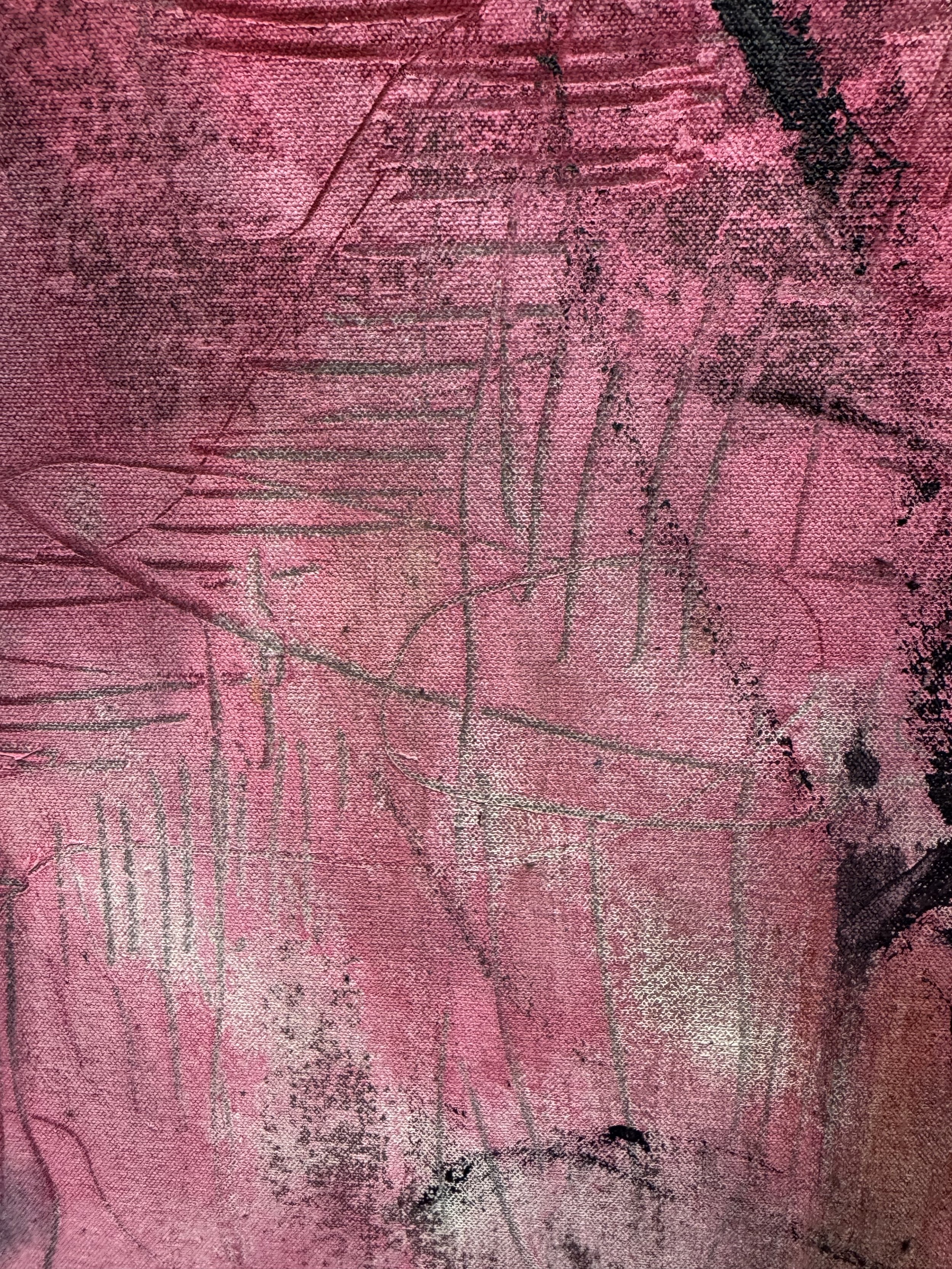Colour as ontology
When colour itself asserts presence, it should be allowed to do so without being tethered to descriptive redundancy
Colour, Form, and Ontology: Extending the Expressive Elements of Painting
In an essay on Raoul Dufy, Sargy Mann writes of a painter who was “trying to extend the expressive possibilities of the elements of decorative design – of line, of tone, of colour, of local drawing, and of the drawing of the whole, that is composition, and what he did was separate them more and more so that each could be used to the full in its own most powerful way, without any unproductive redundancy.”¹ Mann considered Dufy an extreme example of this separation of line and colour, a painter whose practice reveals a disciplined economy: if line secures the form, colour need not repeat the effort, and when colour itself asserts presence, it should be allowed to do so without being tethered to descriptive redundancy. In his account, Dufy achieves a “balance of radiant colours across which is drawn a line of speed and precision and particularity,” so that neither is weakened by duplicating the other. This was, Mann suggests, Dufy’s most radical contribution: “when you have a number of similar objects together … don’t divide up shadow and light on each object, but make up whole sections with the colour of shadow and other sections with the colour of light … In this way the sum total of shadow and light is the same … but the field is clear for the imagination of colour.”¹
Mann’s observations provide a natural bridge to the RCA’s resident Professor of Philosophy, Johnny Golding’s account of colour as ontology. For Golding, colour cannot be confined to the status of an accessory or decorative layer, but must be thought of as an ontological condition in its own right.² ³ Colour exists not merely as a sign or supplement but as presence itself; it is one of the registers through which painting takes place. To release colour from redundancy is not simply a matter of technical efficiency but a way of acknowledging colour’s being. Each element—line, tone, colour—must be allowed to act in its strongest register, otherwise its force is compromised.
The implications of this separation are clear when one turns to twentieth-century practice. Joan Mitchell’s Salut Tom(1979) demonstrates the power of chromatic dispersal to carry composition and rhythm independently of line or local drawing. The painting is vast, urgent, and symphonic, its colour intervals surging against one another without recourse to contour. Line dissolves into colour-rhythm, gesture becomes indistinguishable from hue. Here colour organises space, carries emotion, and sets dynamic relation without leaning upon descriptive contour. In Golding’s sense, this is colour acting ontologically: not laid upon a prior drawing, but structuring the painting as such. Mark Rothko, working in a different register, provides an equally striking case. His great canvases of the 1950s and 1960s hover on the edge of perception, their fields of pigment tending towards equiluminance at the borders, so that figure–ground relation becomes unstable. In these works, line is all but absent, tone is dissolved, and composition reduces to the slow breathing of chromatic blocks.
Salut Tom., Joan Mitchell . This is colour acting ontologically: not laid upon a prior drawing, but structuring the painting
What Rothko achieves is not the illustration of form but the immersion of the beholder into colour as existential condition. The paintings are not of colour, but in colour, asking the viewer to encounter presence through its atmosphere. This is colour in its tragic, even theological, ontology. In both Mitchell and Rothko, the separation of elements releases colour into autonomy. Their works show in practice what Golding insists in theory: that colour is not supplementary but constitutive. Mitchell disperses line into colour, Rothko dissolves tone into colour; in both cases, painting becomes the site where colour is allowed to be itself, unencumbered by redundancy.
Seagram Murals: What Rothko achieves is not the illustration of form but the immersion of the beholder into colour as existential condition
By contrast, the Fauvist experiments of André Derain and the Divisionist procedures of Seurat and Signac exemplify a different approach: colour treated as isolated unit. Derain’s Fauvism relies upon violent contrasts of unmixed hue, applied with a decorative force that disregards descriptive accuracy. His landscapes are startling because colour has been detached from local fidelity and released into expressive juxtaposition. Yet even here colour remains tied to the outlines of objects; it vibrates against the drawing rather than subsuming it. The Divisionists go further, treating colour as analytic isolate. Seurat’s dots, Signac’s tessellations, deploy colour in the most purified form: not mixed, but optically combined in the viewer’s eye. The effect is dazzling—an intensification of hue through adjacency, a physiological exploitation of Chevreul’s law of simultaneous contrast.⁴ But the cost is that colour is subsumed under system. Its existential force is constrained by the scientific schema within which it functions. In Golding’s terms, this is colour stripped of ontology: it operates not as a condition of being, but as an element in an optical equation. The comparison sharpens the point. Mitchell and Rothko release colour into being, Derain and the Divisionists control it into system. Both extend colour’s possibilities, but only the former allow colour to act in its fullest ontological register.
Derain: colour is subsumed under system. Its existential force is constrained by the scientific schema within which it functions
At this point it becomes clear that colour must also be understood as material. Pigments are never abstractions: ultramarine is ground lapis lazuli, vermilion is mercuric sulphide, ochre is iron oxide from the soil. Each pigment carries with it not only hue but history, density, opacity, and texture. To treat colour as ontology is to see it as substance, inseparable from its material condition. Goethe’s psychology of hue described how colour affects the emotions, while Chevreul’s optical law explained how colours influence each other when placed in proximity.⁵ Yet both overlook that every pigment is a thing, with behaviour shaped as much by its body as by its chroma. A colour’s agency lies not only in how it looks but in how it sits on the ground, how it absorbs or resists medium, how it changes with time.
Colour understood as material. detail from a work showing granular washes on a prepared textured ground, by Martin Kinnear RCA presentation Summer 2025.
This is why Golding’s writing on radical matter is so crucial. Ontology is not an abstract label placed upon painting but the recognition of what painting already is: a negotiation with substances that both constrain and enable. Pigment does not carry colour neutrally but generates it. Surface does not receive colour passively but conditions it. To paint is therefore to engage colour as material presence as well as perceptual effect.
Seen in this light, Mann’s remarks on Dufy are not quaint but prescient.¹ His insistence on separating line and colour anticipates much of what became central to modern and contemporary practice. The great canvases of Mitchell and Rothko show how colour can organise space and atmosphere without reliance on contour or tone. Fauvism and Divisionism, for all their intensity, reveal the limitations of keeping colour bound to outline or schema. The history of painting, read this way, is a history of colour’s gradual release from redundancy and its recognition as ontology.
To acknowledge colour as ontology is to treat it as more than effect. Colour is substance, material, presence. Pigment is earth before it is hue; surface is condition before it is effect. To grant colour this dignity is to allow painting to become what it has always threatened to be: not a coordination of decorative elements but an encounter with being itself.
Notes
Sargy Mann, “On Raoul Dufy,” Painters’ Table (online article).
Johnny Golding, “Ecce Homo Sexual: Ontology and Eros in the Age of Incompleteness and Entanglement” (2014).
Johnny Golding, “The Courage to Matter,” in Data Loam: Sometimes Hard, Usually Soft (Vienna: De Gruyter, 2020).
Michel-Eugène Chevreul, The Principles of Harmony and Contrast of Colours (London: Routledge, 1854).
Johann Wolfgang von Goethe, Theory of Colours (London: John Murray, 1840).
Select Booklist
Chevreul, Michel-Eugène. The Principles of Harmony and Contrast of Colours. London: Routledge, 1854.
Goethe, Johann Wolfgang von. Theory of Colours. London: John Murray, 1840.
Golding, Johnny. “Ecce Homo Sexual: Ontology and Eros in the Age of Incompleteness and Entanglement” (2014).
Golding, Johnny. “The Courage to Matter,” in Data Loam: Sometimes Hard, Usually Soft. Vienna: De Gruyter, 2020.
Mann, Sargy. “On Raoul Dufy.” Painters’ Table.
Mitchell, Joan. Joan Mitchell: Lady Painter. New York: Knopf, 2011.
Rothko, Mark. The Artist’s Reality: Philosophies of Art. New Haven: Yale University Press, 2004.
Seurat, Georges. Seurat and the Making of La Grande Jatte. Chicago: University of Chicago Press, 2004.




